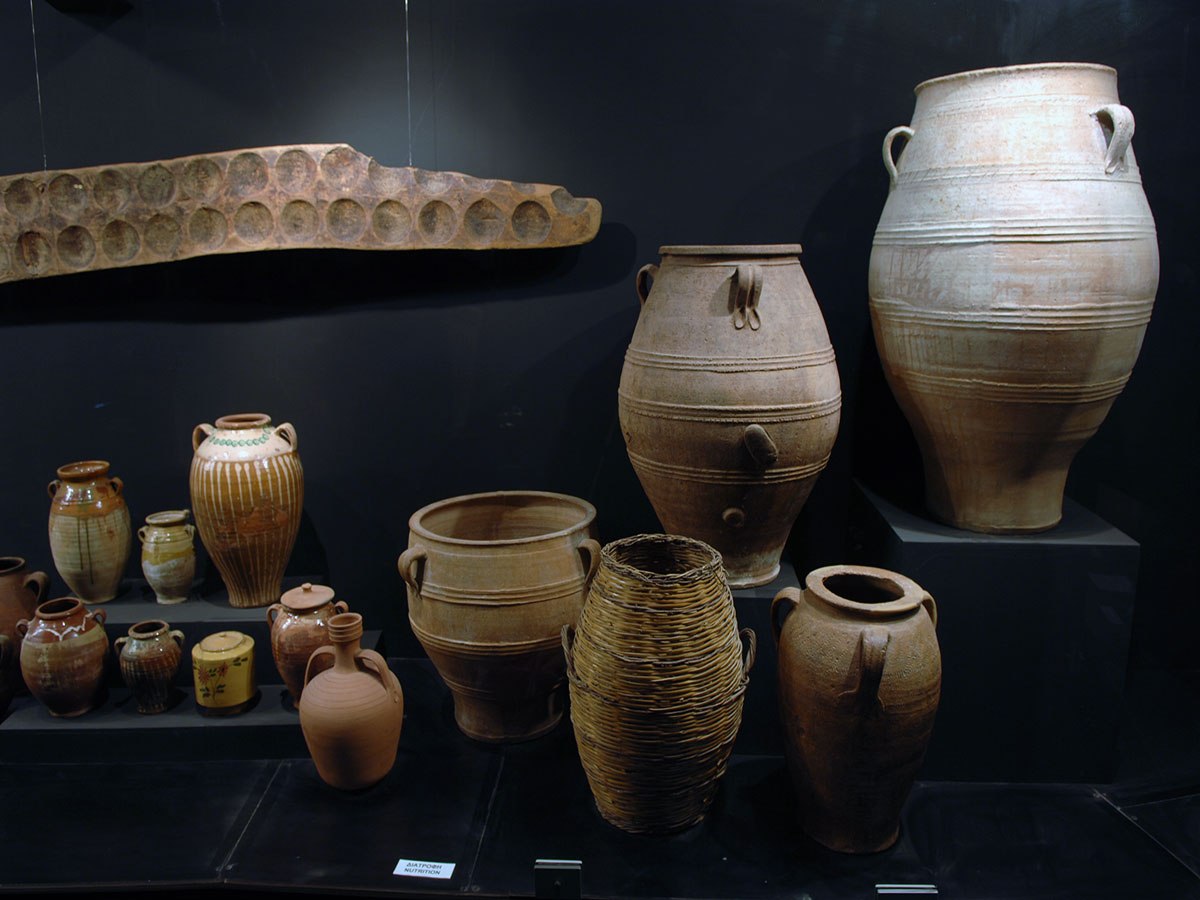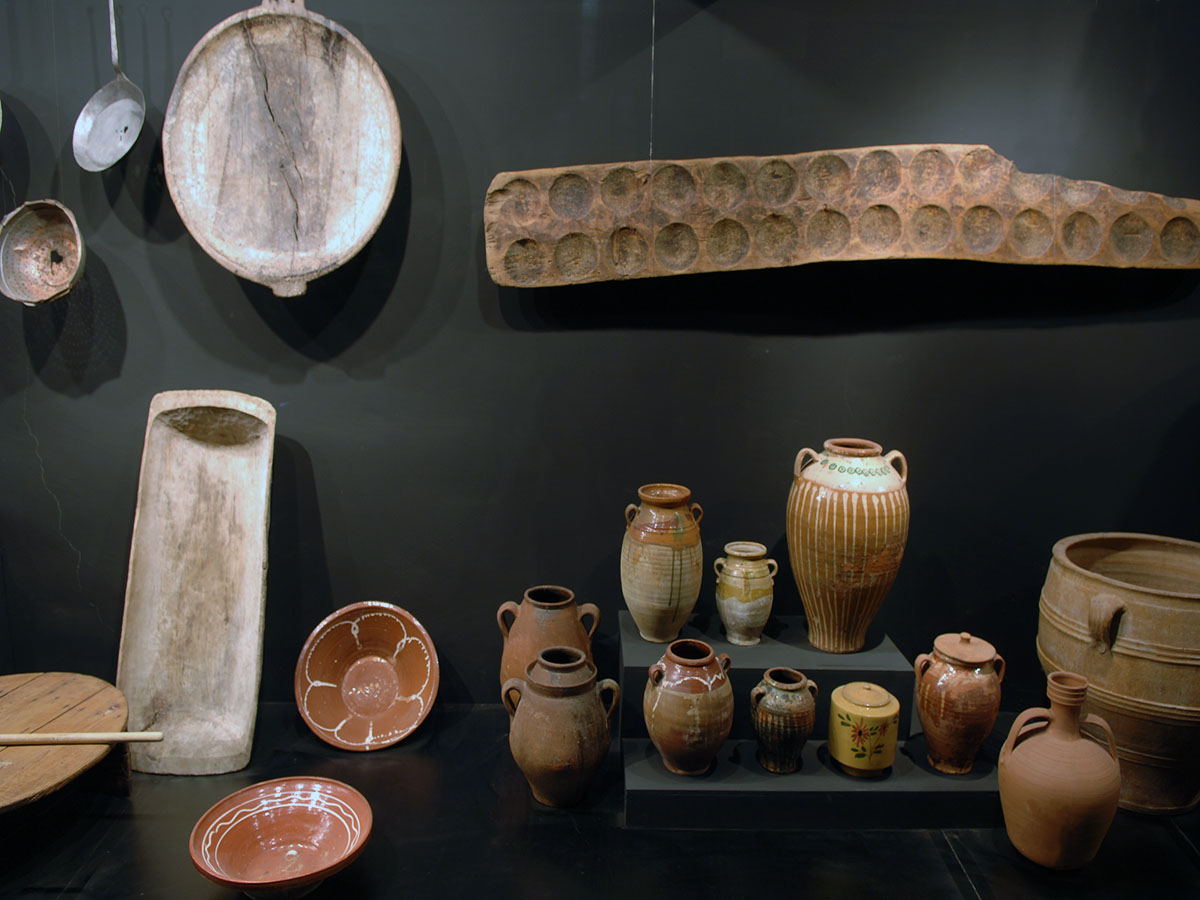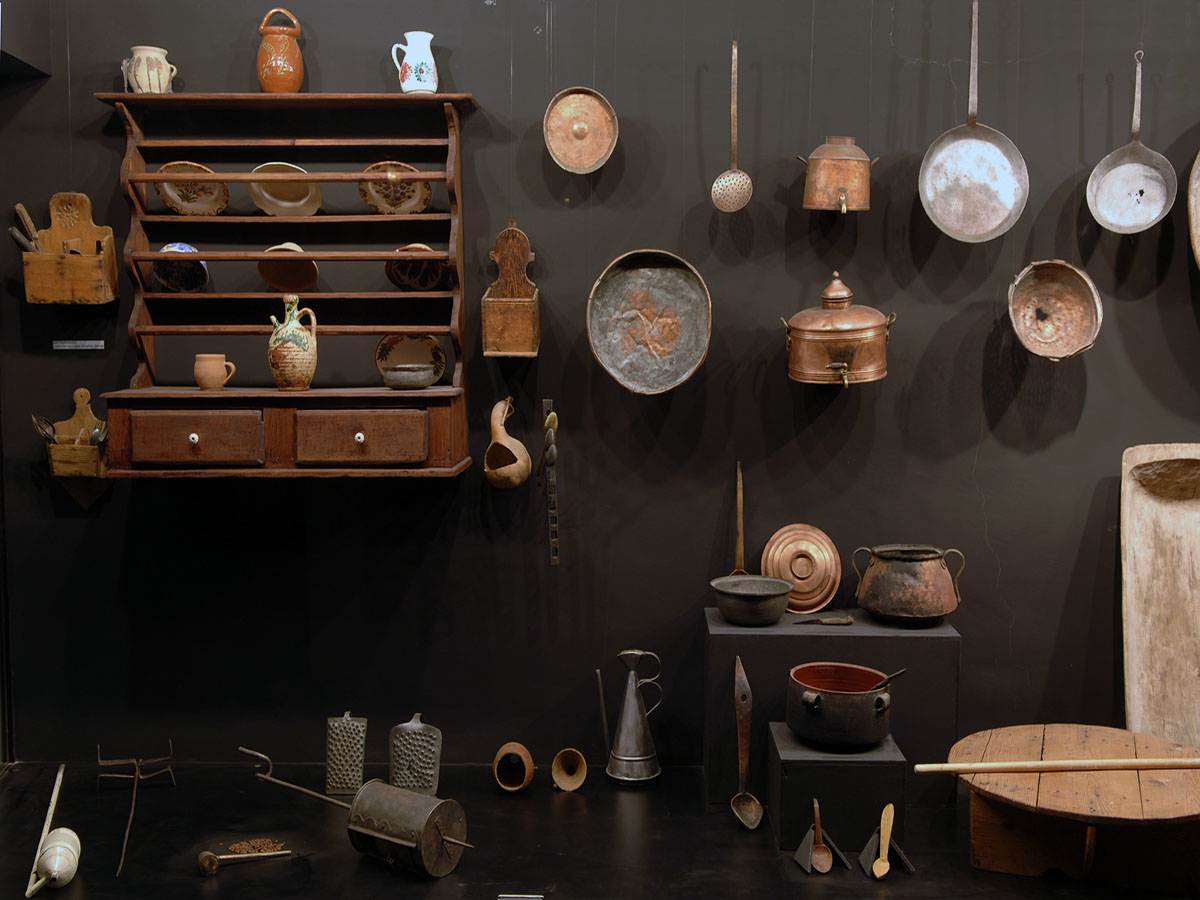Exhibition
Presentation Of Exhibits By Section
Storage
A wide variety of shape and size of pot is used to store farming products. The large pots are used for olive oil, wine and honey. Medium-sized pots (mesopithara) are intended for grain and legumes.
Small pots (pitharakia and kouroupes) are used for edible olives, smoked pork in fat, pickles and other potted goods, sea salt, grape-juice syrup etc. Most of these pots were placed in a ground-floor storeroom or at the back of the long main dining room containing the fireplace and the hearth for cooking.

CONSUMPTION
At the end of the process, the food is cooked and eaten. Most vessels are ceramic and come in various shapes according to their use. Wealthier families also used copper vessels, while mountain-dwellers carved containers out of solid wood from the trunk of the tree. The most convenient kinds of cooking-pot were clay or wooden basins in various sizes. The larger ones, such as the wooden trough, were used for kneading dough.
Clay cooking-pots were mostly used, together with the great copper pot when a large amount of food was involved. Pans were hand-made of iron, with long handles.

Cretans did not use large skewers like those found in the rest of Greece, but short ones, about 50cm long, on which pieces of meat or small game animals were threaded. The cook also had many secondary vessels next to the hearth.
The tableware was very simple: clay plates, cups and bowls, personal wooden spoons and knives. In older days people did not use forks. Water-jugs and wine-jugs were also made of clay, or of a particular kind of carafe-shaped dried gourd.

